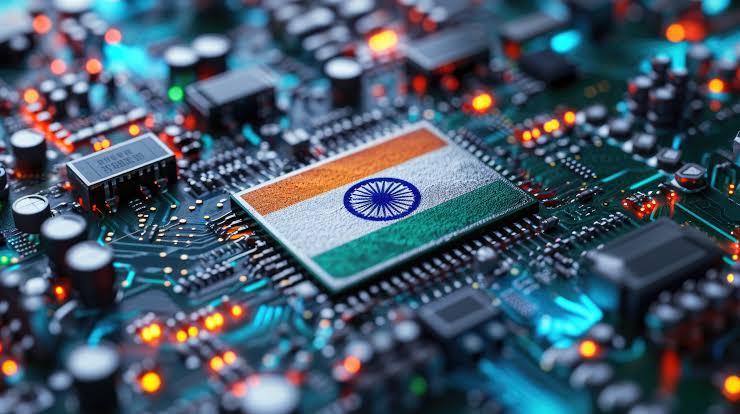The Modi government’s Production Linked Incentive (PLI) scheme is emerging as an important revolution in the Indian economy and manufacturing, especially in the field of smartphone manufacturing. India produces 97% of its total mobile phone demand locally. This scheme is a decisive step taken by the Modi government to promote self-reliance and global competitiveness of Indian industry under Make in India. The Modi government not only created enabling policies to increase production, but it also prioritized efficiency, innovation and long-term growth for companies. Along with this, the government’s responsible governance and transparent policies implemented this scheme effectively and provided positive results. The government’s objective was to manufacture more and more products in the country, which would not only strengthen self-reliance but also promote employment generation and economic growth.
Let us analyze the objectives and results of the PLI scheme to understand whether the goals of this scheme have actually been achieved and how much benefit has been derived. Under the PLI scheme, the smartphone manufacturing sector has seen a historic transformation, with an increase in production as well as a surprising increase in exports and employment opportunities. This scheme has taken important steps to establish India as a global manufacturing hub. The incentives given to manufacturers under the PLI scheme helped the Indian smartphone industry become globally competitive.
Government gets 19 times benefit from incentives:
In the PLI scheme, incentives are given to the producers by the government, like if a company is making mobile phones, then they get incentives in the PLI scheme. Suppose if there is a mobile phone of 25000 and the government gives you incentive at 10% i.e. Rs 2500 subsidy, then the cost of that mobile is reduced and this incentive works as a lifeline for the companies. Also, the PLI scheme has proved to be a treasure of revenue for the government.
According to the report of the Ministry of Finance and the Ministry of Electronics and IT (MeitY), according to the data of India Cellular and Electronics Association (ICEA), goods worth Rs 12.55 lakh crore have been produced between FY 2021 and FY 2024. During this period, the government allocated Rs 5,800 crore under the PLI scheme, while the government received a revenue of Rs 1,04,200 crore in return for the smartphone scheme, which is about 19 times the incentive amount. This figure underlines the success of this scheme, because the investment made by the government was not limited to only increasing production, but also resulted in huge revenue generation.
Selected companies and performance of PLI scheme
A total of 10 companies were selected under the PLI scheme, of which 5 were global and 5 were Indian companies. A total budget of Rs 38,601 crore was set for this scheme. Under the scheme, it is mandatory for companies to meet production targets, and incentives were provided only to those companies that met their set production targets on time and ensured an increase in production every year. However, 1 global and 4 Indian companies were deprived of the benefits of the scheme due to not being able to meet the target. The companies that benefited from the incentives included global companies like Foxconn, Pegatron, Tata’s Wistron, and Samsung. Among the Indian companies, only Dixon Technologies met the target and received the incentive. At the same time, Xiaomi’s manufacturing company Rising Star and Indian companies like Lava, Optimus, Padget (Micromax), and UTL Neolink were deprived of the benefits of this scheme.
This performance shows that the scheme encouraged only those companies that were seriously committed to increasing their production capacity. This had a positive impact not only on the competitiveness of the companies but also helped in taking Indian production capacity to global standards. This scheme was brought for 5 years which was to run from 2020 to 2025 but due to the arrival of Covid, no one except Samsung achieved their target, due to which the government gave another year’s time here. So technically this scheme started in 2021 and will run till the financial year 2026 and all the companies will be given incentives by the financial year 2027.
Job creation and improvement in India’s global position:
The PLI scheme was launched as an ambitious initiative by the Modi Government, and it is being seen as a great success so far. Most of the goals and objectives set under this scheme have been successfully achieved. The most important objective—boosting production in India—has been largely accomplished.
The impact of this scheme has not been limited to production alone, but has also brought positive results in many important areas such as job creation, increase in revenue, jump in exports, attracting foreign direct investment (FDI) and value addition. In the coming times, the government is expected to give even more incentives under this scheme in its upcoming budget. This will further strengthen India’s position in global competition. Apart from this, a target of production of $ 500 billion has been set by 2030, towards achieving which this scheme will play an important role.
Under the PLI scheme, smartphone manufacturers were given clear and time-bound production targets, on completion of which they were provided incentives. This strategy not only accelerated production but also achieved remarkable success in the field of employment generation. The mobile phone industry has so far created 3 lakh direct and 6 lakh indirect employment opportunities through this scheme. Additionally, the scheme brought a big change for women and mid-skill workers. Women’s participation in the manufacturing sector has increased, opening up new economic opportunities for them. The scheme also proved to be a big relief for blue-collar workers, as it also expanded employment opportunities in ancillary industries related to production. As a result, India has not only become self-reliant in smartphone manufacturing but has also become an important part of the global supply chain, improving the country’s global competitiveness and economic position.
Historic jump in exports and value addition:
Another impressive result of the PLI scheme has been seen on India’s smartphone exports. Earlier, where India was ranked 23rd in smartphone exports, now it has made rapid progress to become the third largest smartphone exporter in the world. Under this scheme, India has so far exported smartphones worth Rs 2.8 lakh crore. In big markets like the US, smartphones have become one of India’s top exported products, reflecting India’s growing technological prowess and competitiveness. The industry which was lagging behind in exports in 2018-19 is today playing a major role in India’s total exports.
With the impact of the PLI scheme, India has not only become self-reliant in smartphone manufacturing but has also achieved historic achievements in the field of exports. Smartphones have now become India’s largest exported product to the US, reflecting India’s competitiveness in the global market.
Rapid progress in value addition and iPhone’s contribution:
On one hand, the big work that has been done is that of value addition because it is not as if a single country makes everything that is required to make a smartphone. In a smartphone, you need a screen, a battery, nuts, bolts, etc., whatever you need, everything is made in different countries. Now look at India, in the last five years, India has increased the value addition in smartphone manufacturing from 12% to 20%, which means that now one-fifth of the total components of a smartphone are being manufactured in India. This achievement is remarkable even on global standards, because in this phase, India has increased value addition at a faster pace than China and Vietnam.
The biggest success story is Apple. iPhone manufacturing and exports have revolutionized India’s smartphone sector. Apple has exported $6 billion worth of iPhones from India, giving a new dimension to the country’s export potential. Along with this, dependence on China has also reduced significantly.
In the last one year, iPhone exports have grown by 33% in value terms. Due to this, iPhone’s export target of $10 billion is also expected to be achieved this financial year. This role of Apple has strengthened not only exports but also employment generation and India’s contribution to global competitiveness. This achievement is not limited to export numbers; it also reflects India’s move towards becoming a global manufacturing hub and the success of the “Make in India” vision. The PLI scheme has put India on a platform where it is moving strongly towards economic empowerment as well as earning foreign exchange by becoming an important part of the global supply chain.
Goals and future prospects of the PLI scheme:
Through the PLI scheme, the government has taken important steps towards boosting the production of the Indian smartphone industry, creating jobs, increasing exports, and establishing India as a global manufacturing hub. Moreover, the government aims to achieve the target of $500 billion production by 2030, and this scheme will definitely help in getting closer to it.
Now that India has become a global smartphone manufacturer, the industry is expected to get more impetus in the coming years. The incentive schemes offered by the government will increase competition, providing more opportunities to Indian companies.
The Modi government’s policy clarity and encouraging approach have played an important role behind India’s success in smartphone manufacturing. Through the Production Linked Incentive (PLI) scheme, the government provided a strong framework to boost production and attract global investment. The scheme not only provides financial incentives but also ensures clear targets and performance-based benefits to manufacturers. Moreover, under campaigns like “Make in India” and “Atmanirbhar Bharat”, the government took several measures such as logistics, tax exemptions, and procedural reforms to create an investment-friendly environment.
This proactive role of the government helped India emerge as a global hub for smartphone manufacturing. Particularly attracting major companies like Apple and successfully shifting the production base to India is a direct result of this policy support. This vision of the Modi government is not only empowering the country’s economy but also giving it a strong position in the global value chain.
(The views expressed are the author's own and do not necessarily reflect the position of the organisation)


